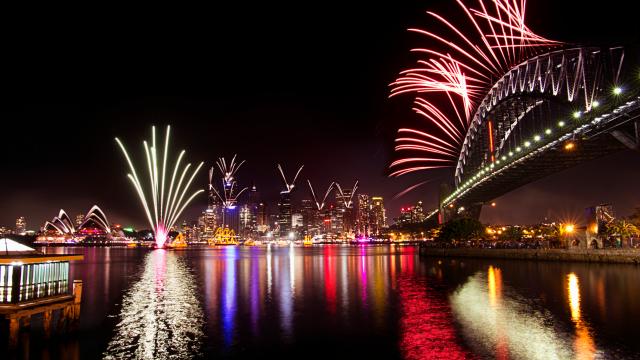Every New Year’s Eve, global cities light up in shades of green, pink and gold as organisers unleash tonnes of combustible fireworks into the atmosphere. While it makes for an undeniably pretty sight, fireworks cause significant air pollution and leach harmful chemicals into the air that can cause health issues down the track. With much of New South Wales spending November and December in a smoke-filled haze, recent calls have put increased scrutiny on the annual New Year’s Eve firework celebrations.
The New South Wales bushfire crisis, which led to the highest recorded pollution levels across the state, has sparked concerns over large-scale fireworks displays due to their inherent fire and pollution risks. In November, this lead to significant outcry after a corporate event was given exemption to a total fire ban and allowed to go ahead at the height of the bushfire crisis.
Since then, debate has raged over whether Sydney’s New Year’s Eve fireworks show should go ahead. Every year, Sydney’s fireworks displays cost upwards of the $5 million mark. In 2018, it cost $5.8 million. In 2015, it was estimated that for every minute of fireworks, $45,000 disappeared. At a time when Prime Minister Scott Morrison refuses to pay volunteer firefighters, arguments abound that that money could have been better allocated towards supporting firefighters and helping them to fight the bushfires that continue to rage across Australia.
[referenced url=”https://gizmodo.com.au/2019/12/australia-needs-a-national-crisis-plan-and-not-just-for-bushfires/” thumb=”https://gizmodo.com.au/wp-content/uploads/2019/12/file-20191213-85397-15c6ubq-410×231.jpg” title=”Australia Needs A National Crisis Plan, And Not Just For Bushfires” excerpt=”Calls are growing for a national bushfire plan, including from former prime minister Malcolm Turnbull, who says they are an issue of national security and the federal government must provide hands-on leadership.”]
How risky are fireworks?
While licensed fireworks displays are generally considered to be low risk for fires, they still have a significant impact on the environment that shouldn’t be ignored. According to an Atmospheric Environment study, while fireworks are transient, they contain highly concentrated materials, and because of this, contribute significantly to annual metal emissions. They can also be easily inhaled because their combustion produces fine particulate metals. These include lead, mercury salts, copper and aluminium pollutants — all of which create the bright, fun colours of fireworks.
A 2015 study from the American National and Atmospheric Administration tracing the effect of Independence Day fireworks on local atmosphere indicated that, on a national average, the fireworks increased the abundance of PM2.5 particles within a 24-hour window by a staggering 42 per cent. At a location near the fireworks, the PM2.5 particle data showed a 370 per cent increase.
As you may recall, this is the same particulate matter produced by the NSW bushfires, and the same pollution that residents spent the better part of December breathing in. While using a tool like a P2/N95 mask may prevent you from inhaling any of this matter, their effectiveness is not guaranteed.
How do particles impact your health?
According to the Australian Department of Environment and Energy, exposure to airborne particles can cause a range of serious health problems including respiratory illnesses like asthma and bronchitis, as well as heart disease. The metal-based chemicals involved in fireworks have also been linked to the development of cancer. For older or younger people, the health effects can be more serious.
One of the major effectors of air quality in Australia is particulate matter, so while fireworks may seem harmless in the short term, their longterm impact on air quality is major and detrimental. With nearly every region of Sydney recording an Air Quality Index reading of over 200 in November this year — making conditions ‘hazardous’ — those in the state have already been exposed to the worst atmospheric conditions on record. Additional pollution from firework-borne particulate matter is liable to contribute to the development of serious health concerns.
While Sydney Lord Mayor Clover Moore indicated that Sydney’s New Year’s Eve fireworks would go ahead only if it was ‘the right thing to do’, every indication currently suggests the fireworks will still go ahead, despite important environmental and health concerns.
Those planning to attend the fireworks in person should consider investing in a P2 mask, or viewing them at a distance.
